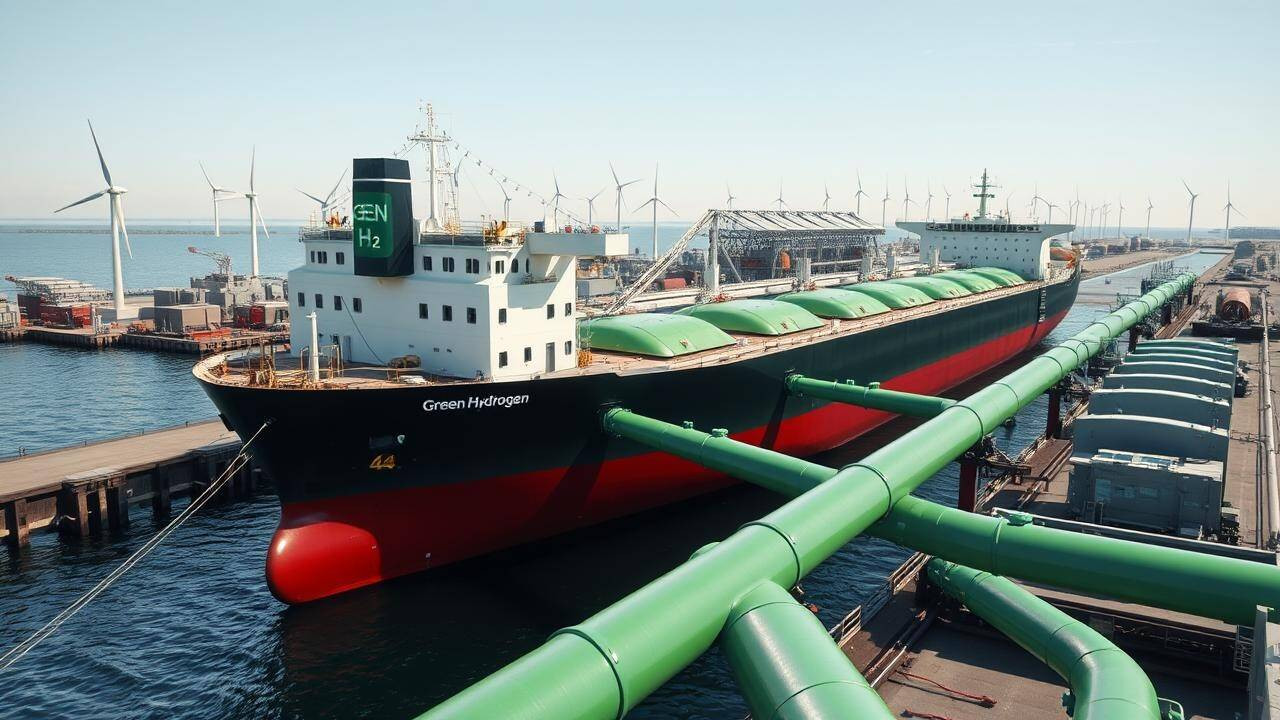India aims to capture 10% of the global green hydrogen demand by 2030, with significant progress made through the National Green Hydrogen Mission. Nineteen companies have been allocated 862,000 tonnes of annual production capacity, and 3,000 MW of electrolyser manufacturing capacity has been assigned. The EU is also strengthening collaboration with India in the green hydrogen sector.
India’s Bold Bet on Green Hydrogen: A Glimpse into a Cleaner Future
The world is on a frantic search for sustainable energy solutions, and India is making a compelling case for green hydrogen as a key player. Forget baby steps; India’s taking a giant leap toward capturing a significant slice – we’re talking 10% – of the global green hydrogen demand pie by 2030. It’s an ambitious target, no doubt, but the wheels are already turning, and the momentum is building.
The numbers are impressive. The government has already allocated production capacity totaling 862,000 tonnes to 19 different firms. This isn’t just talk; it’s a concrete commitment backed by real investment. These companies, ranging from established energy giants to innovative startups, are now tasked with turning this vision into reality.
What’s driving this surge in interest? India’s reliance on imported fossil fuels has long been a concern, both economically and strategically. Green hydrogen offers a pathway to energy independence, leveraging the country’s abundant renewable energy resources – particularly solar and wind – to produce a clean-burning fuel. Imagine a future where trucks, buses, and even industries are powered by hydrogen generated from sunlight and wind. It’s not a pipe dream; it’s a rapidly approaching reality.

But, what exactly is green hydrogen? Unlike hydrogen produced from fossil fuels (often referred to as “grey” or “blue” hydrogen), green hydrogen is created through electrolysis, using electricity generated from renewable sources to split water molecules into hydrogen and oxygen. This process emits zero greenhouse gases, making it a truly clean energy source.
The National Green Hydrogen Mission: A Catalyst for Change
The foundation for this ambitious plan is the National Green Hydrogen Mission, a comprehensive strategy designed to promote the production, utilization, and export of green hydrogen and its derivatives. This mission is more than just a policy document; it’s a roadmap for creating a thriving green hydrogen ecosystem, complete with infrastructure development, research and development initiatives, and workforce training programs.
One of the key aspects of the mission is to lower the cost of green hydrogen production. Currently, it’s more expensive to produce green hydrogen than its fossil fuel-based counterparts. To bridge this gap, the government is offering incentives and subsidies to encourage investment in renewable energy infrastructure and electrolysis technologies. This financial support is crucial for making green hydrogen economically competitive and driving its widespread adoption.
The allocation of production capacity to those 19 firms wasn’t a haphazard process. It was a carefully designed selection, prioritizing companies with the technological expertise, financial stability, and commitment to sustainable practices needed to succeed in this nascent industry. Each firm is bringing a unique set of strengths to the table, fostering innovation and competition within the green hydrogen sector.
Beyond Production: The Broader Impact
The benefits of India’s green hydrogen push extend far beyond just energy independence. It promises to create thousands of jobs in renewable energy, manufacturing, and other related industries. It also offers a significant opportunity to reduce air pollution, particularly in urban areas struggling with poor air quality.
Furthermore, India aims to become a major exporter of green hydrogen and its derivatives, such as green ammonia and green methanol. This would not only generate significant revenue but also position India as a global leader in the clean energy transition. The potential for economic growth and technological innovation is immense. Think about Indian-made electrolyzers and hydrogen fuel cells powering communities across the globe. It’s a powerful vision.
To bolster these efforts, strategic collaborations are critical. India is actively engaging with other countries and international organizations to share knowledge, best practices, and technologies related to green hydrogen. For example, partnerships with nations already advanced in hydrogen technologies could accelerate India’s progress and ensure that it remains at the forefront of this rapidly evolving field. Learn more about India’s related energy policies.
The road ahead isn’t without its challenges. Scaling up production, developing the necessary infrastructure (pipelines, storage facilities, and refueling stations), and creating a robust regulatory framework will require sustained effort and collaboration. However, the potential rewards are too significant to ignore.
A Sustainable Future Fueled by Green Hydrogen
India’s commitment to green hydrogen is more than just a policy initiative; it’s a statement of intent, a bold vision for a cleaner, more sustainable future. While achieving the ambitious goal of capturing 10% of the global market by 2030 will require unwavering dedication and strategic execution, the pieces are in place, and the momentum is undeniable. The world is watching, and India is poised to lead the way in the green hydrogen revolution. The future truly looks to be powered by green hydrogen.







